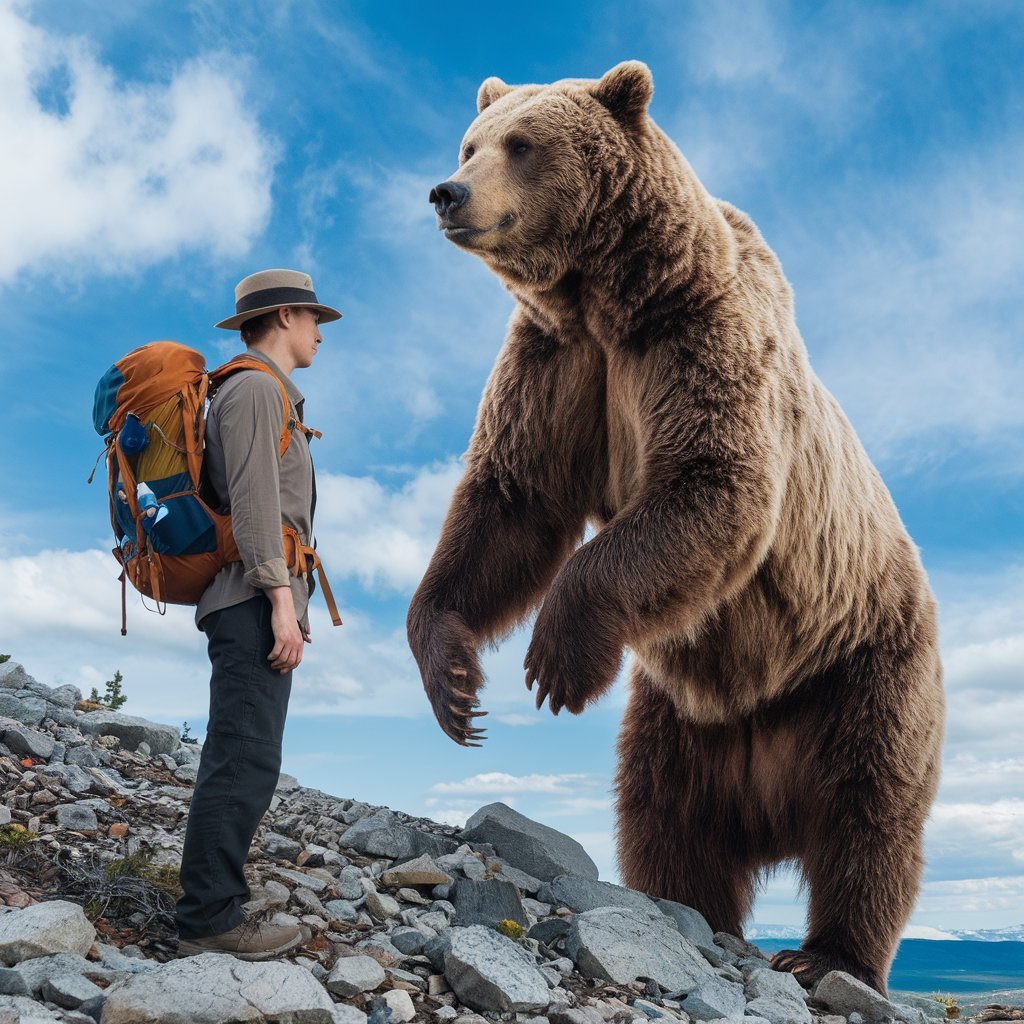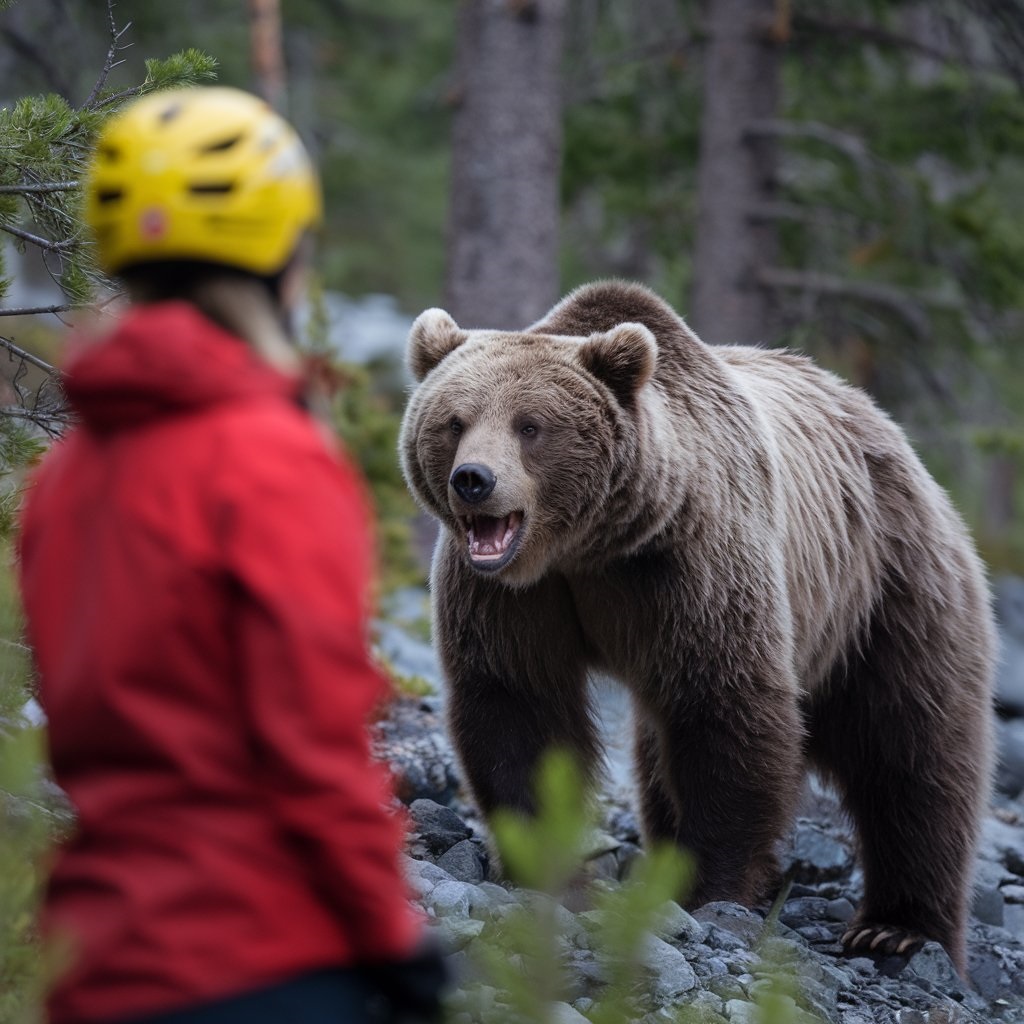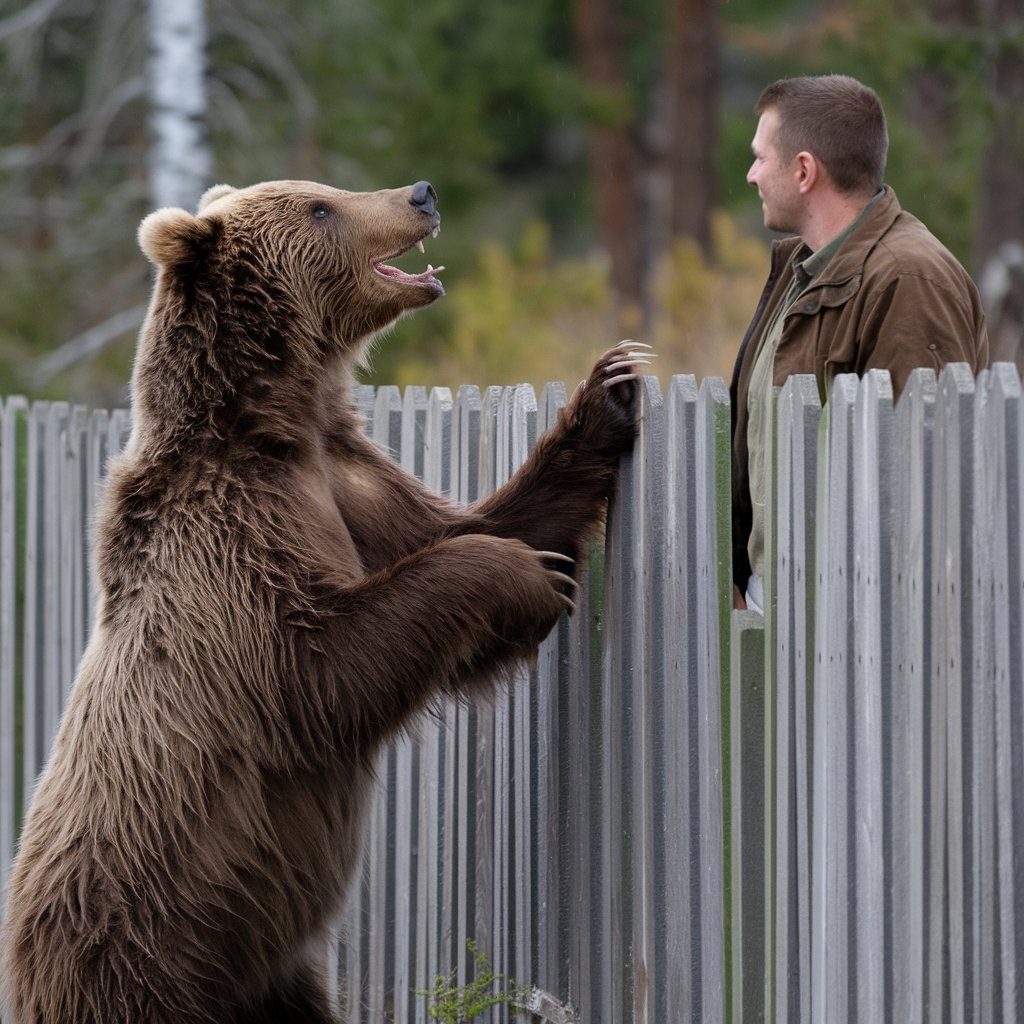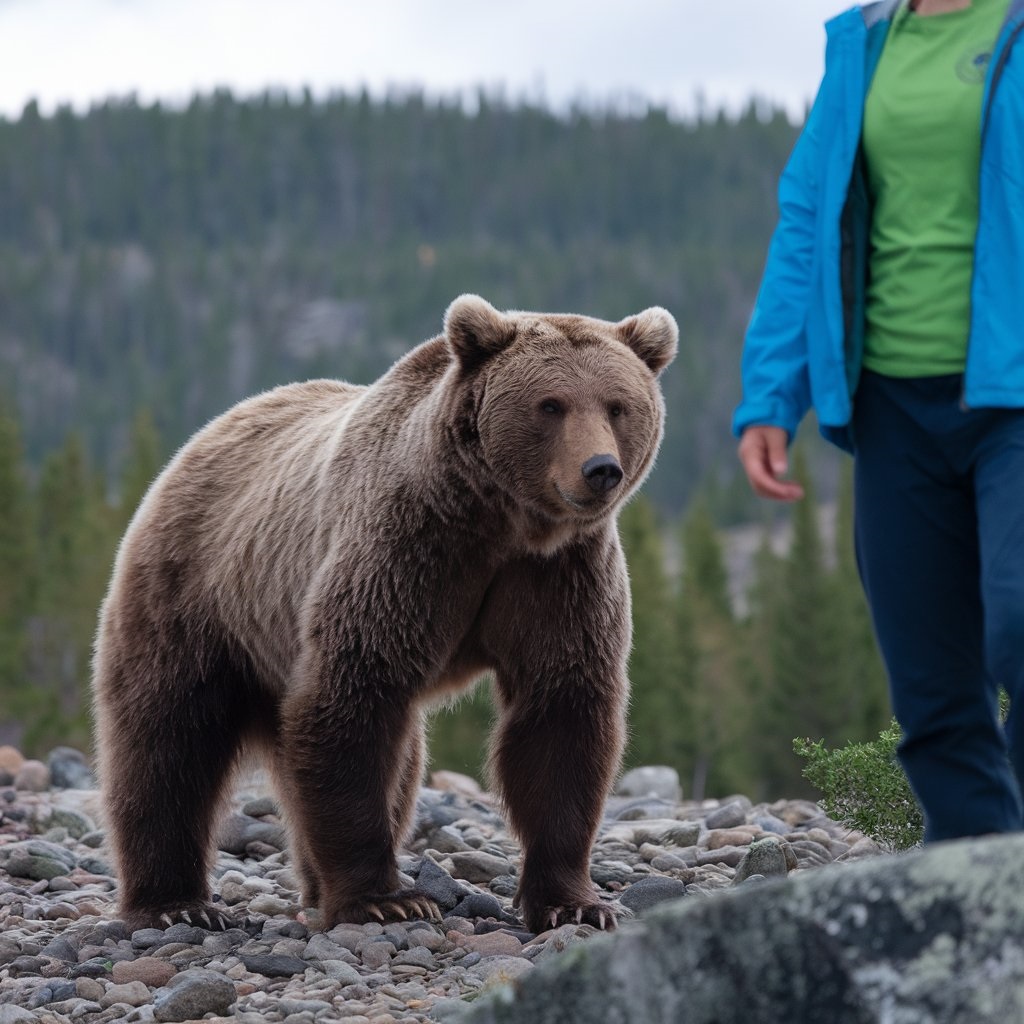Grizzly bears, scientifically known as Ursus arctos horribilis, are some of the most iconic and powerful mammals roaming the wilderness of North America. Their size, strength, and unique behaviors make them both fascinating and intimidating. One question often arises among outdoor enthusiasts: Do grizzly bears attack humans?
The short answer is yes, grizzly bears can attack humans, but such incidents are relatively rare. Most encounters occur due to misunderstandings or unexpected intrusions into the bear’s territory. In this comprehensive guide, we’ll explore everything you need to know about grizzly bear attacks, the reasons behind them, and how to stay safe when venturing into bear country.
Here’s a detailed table summarizing the facts and figures from the article:
| Category | Details |
|---|---|
| Scientific Name | Ursus arctos horribilis |
| Weight | 400–800 pounds (up to 1,000 pounds for coastal grizzlies) |
| Height (on four legs) | 3–5 feet |
| Height (standing) | 6–7 feet |
| Speed | Up to 35 mph |
| Claw Length | 2–4 inches |
| Fur Color | Ranges from dark brown to lighter blonde shades |
| Main Habitat Regions | Alaska, western Canada, Montana, Wyoming, Idaho, Yellowstone, and Glacier National Parks |
| Diet | Omnivorous: plants, berries, insects, fish, and occasionally large mammals |
| Bear Spray Effectiveness | Over 90% |
| Distance for Bear Spray Use | 20–30 feet |
| Annual Attacks in North America | 10–15 (average) |
| Fatal Attacks Annually | 1–2 (rare) |
| Maternal Defense Range | Extremely protective of cubs within 100–200 feet |
| Peak Activity Times | Dawn and dusk |
| Grizzly Bear Population | Approx. 55,000 in North America (30,000 in Alaska alone) |
What Are Grizzly Bears?
Grizzly bears are a subspecies of the brown bear, distinguishable by their grizzled fur, which is a mix of dark brown and lighter blonde tones. They are apex predators, meaning they sit at the top of their food chain, but their diet and behavior reveal a much more complex story.

Physical Traits
| Trait | Details |
|---|---|
| Weight | 400–800 pounds (can reach 1,000 pounds in coastal areas). |
| Height (on four legs) | 3–5 feet at the shoulder. |
| Height (standing) | 6–7 feet when standing upright. |
| Claws | Long, curved, and sharp—ideal for digging and tearing. |
| Speed | Up to 35 mph, faster than a running human. |
| Fur | Grizzled with dark brown and blonde hues. |
Their signature shoulder hump, made of powerful muscles for digging, is a key identifier that sets them apart from black bears.
Habitat and Range
Grizzlies are found across North America, primarily in:
- Alaska: Home to more than half of the global population of grizzly bears.
- Western Canada: Including British Columbia and Alberta.
- The U.S. Northern Rockies: Particularly in Montana, Wyoming, and Idaho.
Their habitats range from dense forests to alpine meadows, river valleys, and even tundras, depending on the season. Grizzlies are highly adaptable but prefer remote areas with abundant food sources.
Behavior and Diet
Grizzly bears are omnivorous, eating everything from berries and roots to fish, small mammals, and occasionally large prey like elk. Their behavior is largely dictated by food availability, and they are known to roam great distances in search of sustenance.
Do Grizzly Bears Attack Humans?
While grizzly bear attacks are rare, they do happen, and they’re often the result of misunderstandings or accidents.
Defensive vs. Predatory Attacks
- Defensive Attacks: These are the most common and occur when a grizzly feels threatened. This could happen if a person surprises the bear, comes too close to its cubs, or intrudes on a food source.
- Predatory Attacks: Far less common, these attacks occur when a grizzly sees a human as prey. This is extremely rare but can be life-threatening.
Statistics on Grizzly Bear Attacks
According to data from wildlife agencies:
- There are 10–15 grizzly bear attacks reported annually in North America.
- Fatal grizzly attacks occur at a rate of fewer than one per year in the U.S. and Canada.
- Most attacks are non-fatal, thanks to the use of bear spray and proper safety precautions.
While these numbers may seem low, the sheer strength and aggression of grizzlies make every encounter potentially dangerous.

Why Do Grizzly Bears Attack Humans?
Understanding the causes of grizzly bear attacks is essential for staying safe in bear country.
Protecting Cubs
Mother grizzlies, or sows, are fiercely protective of their cubs. If a human gets too close, even unintentionally, the mother bear may attack to defend her young.
Guarding Food
Grizzlies are highly food-motivated. Whether it’s a carcass, a berry patch, or garbage at a campsite, a bear will aggressively defend its food source.
Surprise Encounters
Grizzlies often live in dense forests or areas with limited visibility. A sudden encounter, especially if the bear is startled, can trigger an instinctive defensive response.
Human Habituation
When bears become accustomed to human presence, often due to improperly stored food or garbage, they may lose their natural fear of people. This can lead to more frequent and aggressive encounters.
Common Situations That Lead to Grizzly Bear Attacks
| Situation | Why It Increases Risk |
|---|---|
| Hiking in dense vegetation | Limited visibility increases the chance of startling a bear. |
| Camping near bear habitats | Improper food storage attracts bears to campsites. |
| Fishing or hunting | Scents from fish or game can draw bears to the area. |
| Mountain biking or running | Quick movements can trigger a bear’s chase instinct. |
Recognizing these scenarios and taking precautions can greatly reduce the likelihood of a bear encounter.
How Often Do Grizzly Bear Attacks Occur?
Grizzly bear attacks are rare, with statistics showing that the average person is far more likely to be injured by dogs, lightning strikes, or even bees.
Key Statistics
- In Yellowstone National Park, the odds of being injured by a bear are 1 in 2.7 million visits.
- Despite increased outdoor recreation, grizzly attacks remain relatively stable due to conservation and education efforts.
Are Grizzly Bear Attacks Dangerous?
Grizzly bear attacks are among the most dangerous wildlife encounters due to the animal’s sheer size and strength. Injuries from these attacks often include deep lacerations, broken bones, and even life-threatening trauma.
Survival Stories
Survivors often attribute their escape to knowledge and preparation:
- In 2016, a Montana hiker used bear spray to stop a charging grizzly and walked away with only minor injuries.
- Others have survived by playing dead, a tactic that signals to the bear that the threat has been neutralized.

How to Avoid a Grizzly Bear Attack
Essential Safety Tips
- Carry Bear Spray: Bear spray is highly effective, reducing the likelihood of injury in over 90% of bear encounters.
- Make Noise: Clap, sing, or talk loudly while hiking to avoid surprising bears.
- Hike in Groups: Bears are less likely to approach groups of three or more people.
- Avoid Dawn and Dusk: These are peak activity times for bears.
Proper Food Storage
- Use bear-proof containers for all food and scented items.
- Never leave food scraps, cooking equipment, or garbage unsecured.
Recognize Bear Behavior
- A grizzly standing on its hind legs is often trying to identify you, not attack.
- Signs of aggression include huffing, paw swatting, and bluff charging.
What to Do If You Encounter a Grizzly Bear
Stay Calm
- Do not run. Running triggers a bear’s instinct to chase.
- Slowly back away while keeping the bear in sight.
Use Bear Spray
- Deploy bear spray if the bear comes within 20–30 feet. Aim slightly downward for best coverage.
Responding to an Attack
- Defensive Attacks: Lie flat on your stomach, cover your neck, and spread your legs to appear non-threatening.
- Predatory Attacks: Fight back with any available objects, aiming for the bear’s eyes and nose.
FAQs
Are grizzly bears aggressive to humans?
Grizzlies usually avoid humans but can attack when provoked, surprised, or defending their young, especially protective mothers.
Which bear attacks humans the most?
Grizzly bears are the deadliest, causing more fatalities than black bears, despite being less common in North America.
Can a human survive a grizzly bear attack?
Surviving a grizzly bear attack is possible but often results in serious injuries, as shown by past cases of human encounters.
Are grizzlies more aggressive than black bears?
Yes, grizzlies are much more aggressive and may charge when startled, while black bears typically run or climb trees.
Which bear is the most aggressive?
Grizzlies and polar bears are the most aggressive species, with frequent attacks on humans compared to other bears.
Has a human killed a grizzly bear?
Yes, grizzlies have been killed in self-defense, like the 2023 case in Montana where hunters encountered a charging bear.
How can you escape a grizzly bear attack?
Playing dead by lying flat on your stomach and staying still can deter a grizzly bear until it loses interest.
Has anyone ever fought off a grizzly bear?
Yes, some individuals have fought off grizzlies, including a man who intervened to save a teammate during a bear attack.
Would a tiger beat a grizzly bear?
The outcome of a tiger-versus-grizzly fight is uncertain, as the tiger’s speed contrasts with the grizzly’s sheer strength and size.
Who killed the largest grizzly bear?
In 1953, Bella Twin, a Cree woman, killed one of the largest recorded grizzlies with a single shot from a small rifle.
Can you tame a grizzly bear?
No, grizzlies cannot be domesticated, as their wild instincts and behaviors make them unsuitable for taming.
What scares a grizzly bear?
Grizzlies can be scared off by loud noises like shouting or banging pots, but only from a safe distance.
What is a safe distance from a grizzly bear?
Always stay at least 100 yards (300 feet) away from grizzlies to ensure your safety and avoid provoking them.
Should you play dead or fight a grizzly bear?
When facing a grizzly, play dead by lying flat; fighting back usually increases aggression and danger.
What animal is stronger than a grizzly bear?
While a gorilla is stronger pound-for-pound, a grizzly’s size, claws, and build make it harder to overpower in a fight.
Who is stronger, a polar bear or a grizzly bear?
Grizzlies have more powerful claws and skulls, but polar bears are larger and equally fierce in hypothetical battles.
Could a grizzly bear beat a gorilla?
Grizzlies have the advantage in size and weaponry, such as claws and teeth, over a gorilla in a head-to-head encounter.
What bear is bigger than a grizzly?
Kodiak bears are larger than grizzlies, standing over 10 feet tall on hind legs and weighing up to 1,500 pounds.
How effective is bear spray?
Bear spray is highly effective, deterring bears in over 90% of close encounters and considered essential for outdoor safety.
What’s the difference between a grizzly bear and a black bear?
Grizzlies have a shoulder hump, rounded ears, and larger size, while black bears lack the hump and are generally smaller.
Are grizzly bear attacks increasing?
Although human activity in bear habitats has grown, education and conservation efforts have kept attack rates steady.
What should I do if I see a bear from a distance?
Stay calm, back away slowly, and avoid sudden movements or loud noises that might draw the bear’s attention.

Conclusion
Grizzly bears are magnificent creatures that play a vital role in their ecosystems. While the risk of an attack is low, understanding their behavior and taking proper precautions can significantly reduce the chance of a dangerous encounter.
By being informed and prepared, you can safely enjoy the wilderness while respecting and coexisting with these incredible animals.
Read more knowledgeable blogs on Flowy Magazine

James Clair is a passionate writer and researcher with a deep fascination for animal behavior and its intricate connection to human life. With a background in [relevant field of study, e.g., zoology, psychology, ethology], James has spent years studying the natural world, focusing on how animals’ actions and instincts impact human emotions, behavior, and society.
His expertise in [specific topics or regions of focus, e.g., canine psychology, animal communication, wildlife conservation] has led to numerous published works and collaborations with renowned researchers and institutions. Through his work at Flawy Magazine, James aims to bridge the gap between scientific research and public understanding, offering insightful, accessible articles that explore the complex relationship between humans and animals.
When he’s not writing, James enjoys [personal hobbies or interests, e.g., hiking in nature, volunteering at animal shelters, photography] and is an advocate for [cause or charity related to animals or conservation]. His mission is to inspire readers to see animals not just as companions or creatures of the wild, but as beings whose behavior holds valuable lessons for us all.









